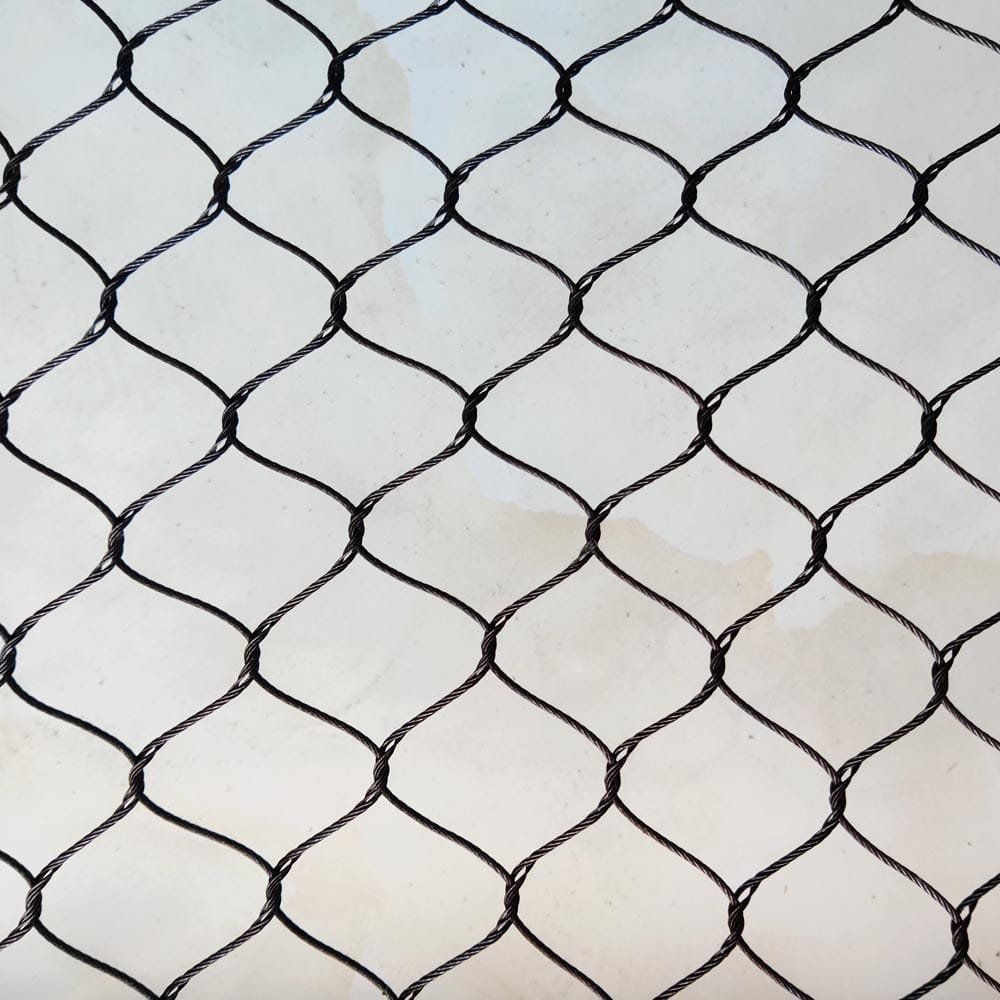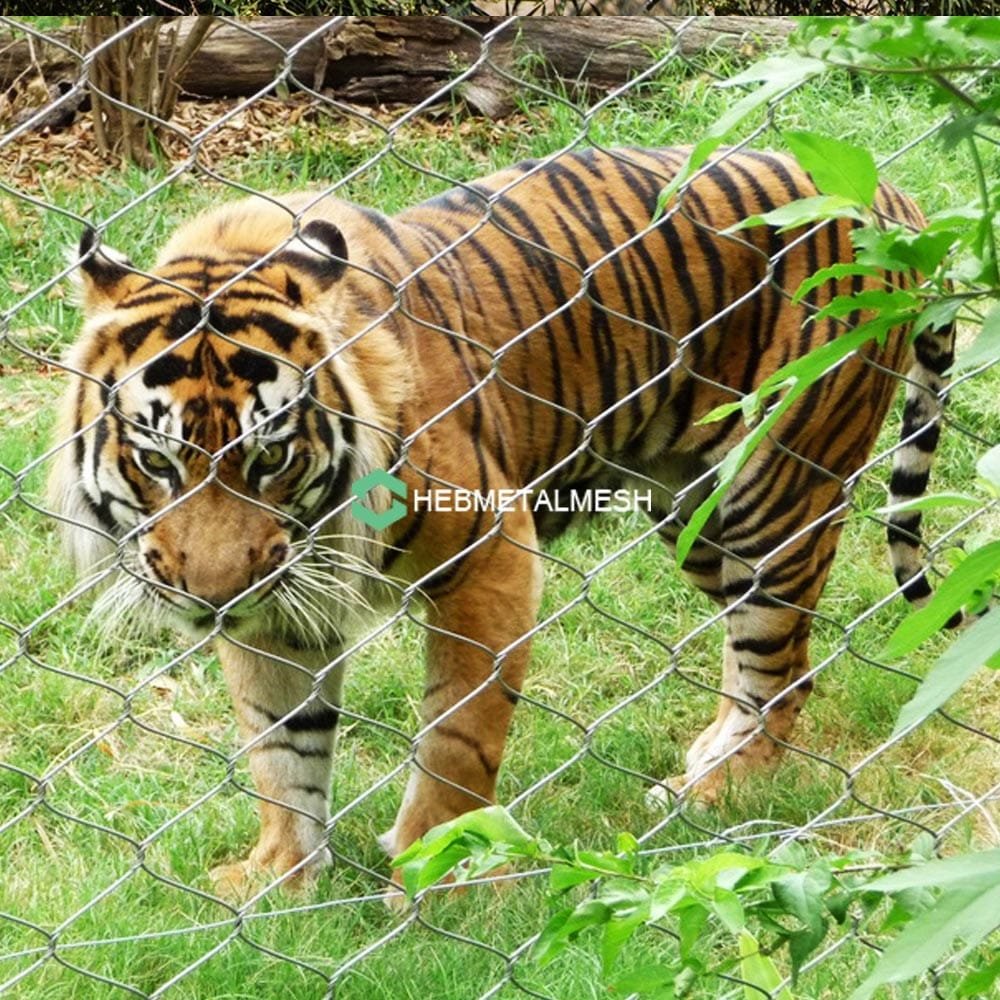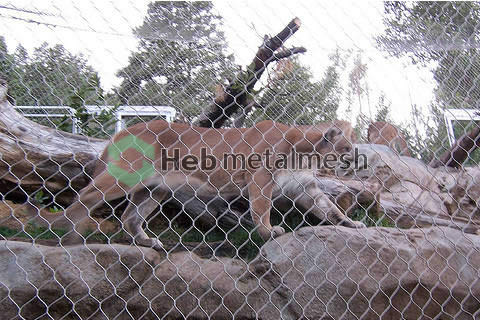Introduction to Construction Netting Fence
Choose a best specification and size for your need.
Contact for your customized panel size and need.
Construction netting fences are specialized barriers designed to provide safety, security, and containment for various applications. These structures are commonly utilized in settings such as animal enclosures, aviaries, farms, zoos, and wildlife parks, where their primary function is to ensure the well-being of the animals within, while also safeguarding the surrounding environment. The versatility of construction netting fence solutions makes them an ideal choice across multiple industries and scenarios, adapting to specific needs according to the type of fencing material and design utilized.
One of the critical aspects of construction netting fences is the ability to choose materials that not only meet safety standards but also provide durability and resilience. Depending on the intended use, netting can be constructed from a variety of materials, including plastic, metal, or synthetic fibers. These materials offer different levels of strength and reliability, which can be tailored to suit the specific requirements of different environments, whether high security is essential or a simple barrier is sufficient.
The importance of construction netting fences extends beyond mere containment; they also play a vital role in promoting a welfare-oriented approach to animal management. For example, in zoos and wildlife parks, properly designed netting allows visitors to enjoy close encounters with animals while keeping the creatures safe and secure. In farming environments, these fences are essential for protecting livestock and crops, ensuring both the safety of farm animals and the integrity of agricultural operations.
Furthermore, construction netting fences can offer aesthetic benefits, blending naturally into their surroundings while still serving their functional purpose. This combination of versatility and practicality makes construction netting fences a indispensable component in a multitude of industries, proving to be a reliable solution for safeguarding both human and animal interests alike.
Types of Construction Netting Fence
Construction netting fences play a crucial role in maintaining safety and efficiency on work sites. The market offers various types of construction netting fences, allowing contractors and builders to select based on specific needs and project requirements. One common type is wire rope mesh, which consists of interwoven steel wires that provide a sturdy barrier. This type of fencing is particularly effective at containing debris and preventing unauthorized access to construction sites, thus ensuring safety for both workers and the public.
Alternatively, eco-friendly materials have emerged as a popular choice among environmentally conscious builders. These construction netting fences are often made from biodegradable plastics or recycled materials, offering a sustainable solution without compromising on durability. Eco-friendly options cater to regulatory requirements and help reduce the overall carbon footprint of construction activities. They also come in various colors and styles suited for different project aesthetics, aligning with growing trends towards sustainability in the construction industry.
When selecting a construction netting fence, it is also essential to consider the color and finish of the materials used. Natural colors, such as greens and browns, blend seamlessly with outdoor environments, minimizing visual disruption on site. In contrast, black oxide finishes provide a sleek and modern look while enhancing visibility, which can be beneficial in low-light conditions. Ultimately, the choice between these options depends on both aesthetic preferences and practical considerations. Understanding the various types of construction netting fences available is crucial in making an informed decision that best fits your project’s objectives and environmental considerations.
Benefits of Using Construction Netting Fence
Construction netting fences are an essential component in the realm of construction and site safety management. These fences offer a range of benefits that make them increasingly popular for both temporary and long-term applications. One of the most significant advantages of construction netting fence is its durability. Made from high-quality materials that are resistant to harsh environmental elements, these fences can withstand the wear and tear associated with construction sites, providing reliable security and containment throughout the project lifecycle.
Another key benefit is the customization options available with construction netting fence. Users can select from various colors, sizes, and mesh types to suit specific needs and preferences. This level of customization allows for more personalized solutions that can enhance site visibility and safety, thereby contributing to overall risk management. Additionally, the lightweight structure of the netting makes installation and removal an effortless task, saving time and labor costs and allowing for efficient site operations.
Furthermore, eco-friendliness is becoming an increasingly important attribute for construction netting fences. Many modern options are made from recyclable materials, which reduce the environmental footprint of construction activities. Choosing an eco-friendly construction netting fence not only complies with sustainability guidelines but also positively impacts the overall perception of the project among stakeholders and the public. The use of construction netting fences, therefore, aligns with the growing trend toward environmentally responsible practices in the construction industry.
In summary, the benefits of using construction netting fences are manifold, encompassing durability, customization, and sustainability. These features make them an ideal choice for various applications within the construction sector, ensuring safety and efficiency on site while promoting eco-conscious practices.
Key Features of Our Wire Rope Mesh
When considering a construction netting fence, the choice of materials significantly impacts both durability and functionality. Our wire rope mesh stands out in the market due to its exceptional quality and tailored features. One of the foremost attributes of our product is its handmade quality. Each mesh is meticulously crafted, which not only ensures consistent performance but also allows for greater attention to detail compared to machine-made alternatives. This craftsmanship translates into a robust construction netting fence that can withstand harsh environmental conditions, making it ideal for a variety of applications.
Another key feature of our wire rope mesh is its long lifespan. Constructed from high-grade materials, the mesh is designed to resist corrosion and wear, providing reliable performance for many years. Unlike other fencing options that may degrade over time, our product maintains its structural integrity, making it a cost-effective solution over the long term. This longevity is particularly valuable in construction and outdoor settings, where durability is essential.
Customization is another area where our wire rope mesh excels. We understand that different projects have varying requirements, which is why we offer customizable sheet sizes to meet specific needs. Whether you are working on a large construction site or a smaller project, our flexible sizing options allow for easy installation and adaptation to any environment. This versatility ensures that clients can find the perfect fit for their construction netting fence needs, enhancing both security and aesthetics.
In conclusion, the combination of handmade quality, long lifespan, and customizable dimensions makes our wire rope mesh an outstanding option in the construction netting fence market. These features not only provide superior value but also ensure that you have a reliable fencing solution tailored to your unique project requirements.
Ideal Applications for Construction Netting Fence
Construction netting fences are versatile safety and containment solutions suitable for a range of applications. They are particularly effective in environments where delineation or protection of space is essential. One of the most common applications is in agricultural settings, where these fences can serve as enclosures for livestock and poultry. Their ability to withstand harsh weather conditions while providing visibility makes them ideal for farms, effectively keeping animals safe while allowing farmers to monitor their well-being.
In addition to agricultural applications, construction netting fences are also widely used in aviaries. These fences provide a safe habitat for birds while promoting airflow and sunlight, essential for their health. The mesh design ensures that the birds have ample space and environmental enrichment without the risk of escape or intrusion from predators. For this reason, these netting solutions are favored by bird enthusiasts and commercial aviary operators alike.
Moreover, construction netting fences can be effectively utilized in construction sites and recreational areas. In construction settings, they act as safety barriers that prevent unauthorized access, thus promoting site security. They can also delineate work zones, ensuring that personnel and equipment are properly confined to reduce the risk of accidents. In recreational areas, particularly those housing animals or botanical gardens, construction netting acts as a protective barrier, promoting safety without obstructing the natural beauty of the surroundings.
In essence, the adaptable nature of construction netting fences makes them an excellent choice for a variety of applications. Whether used for animal enclosures, safeguarding construction sites, or creating aviaries, these fences meet safety and containment needs effectively. Their implementation supports both functionality and design aesthetics, making them an invaluable component in numerous projects.
How to Choose the Right Construction Netting Fence
Selecting the appropriate construction netting fence is crucial to meet the specific needs of various environments, whether for use in construction sites, parks, zoos, or residential areas. The first consideration is the primary purpose of the netting. For instance, if the netting is intended to serve as a safety barrier on a construction site, look for options designed to withstand high winds and physical impacts. Conversely, if the purpose is to contain animals in a zoo or park, avian or wildlife netting may be more suitable, offering the transparency needed for visibility while maintaining structural integrity.
Size is another vital factor in choosing the appropriate netting. Measure the area that requires fencing to determine how much material you will need. Various sizes and heights are available, enabling customization to suit the specific dimensions of your space. It is important to consider the height of the netting, especially in environments like zoos, where taller netting might be necessary to prevent animals from escaping.
Color is often overlooked but plays an essential role in the functionality and aesthetic appeal of the construction netting fence. Darker colors can blend into natural surroundings, making them ideal for park settings, while bright shades, such as orange or yellow, are commonly used for construction purposes to enhance visibility and ensure safety. Additionally, specific environments may call for netting that is UV resistant or treated against weather-related wear and tear.
Lastly, reflect on your specific needs. Do you require a temporary or permanent solution? Understanding the longevity required will help in selecting the right type of construction netting fence material, whether it be more durable options suitable for long-term installation or lightweight options intended for temporary use.
Installation Tips for Your Construction Netting Fence
When planning to install a construction netting fence, meticulous preparation and the right tools are vital for achieving optimal results. Begin by gathering the necessary tools, which typically include a measuring tape, stakes, a level, a post driver, and ties or clamps for securing the netting. Additionally, gloves and safety goggles are recommended to ensure personal safety during the installation process.
Preparation is key to a successful installation. Start by identifying the perimeter where the construction netting fence will be erected. Use the measuring tape to measure the area accurately, marking the corners with stakes. This will provide a clear visual guide throughout the installation process. It is essential to check local regulations regarding fencing height and material to ensure compliance before purchasing your construction netting fence.
Once the area is marked, it’s important to prepare the ground. Clear any debris, rocks, or vegetation that may interfere with the installation or stability of the fence. For uneven terrain, consider leveling the ground where the posts will be placed. Ideally, you should install the netting about 6 to 8 inches above ground level to allow for movement and drainage while preventing damage from flooding or other environmental factors.
With preparations complete, you can begin the installation. If your construction netting fence requires posts, start by driving them into the ground at the marked locations using a post driver. Ensure each post is vertical by utilizing the level tool. Next, attach the netting to the posts using ties or clamps, making sure it is taut but not overly stretched to avoid tear or wear. Regular checks during and after installation will help maintain the integrity of your construction netting fence, ensuring it serves its purpose effectively and securely for the duration of your project.
Maintenance and Care for Construction Netting Fences
Proper maintenance and care for construction netting fences are essential to ensure their longevity and effectiveness. By adopting regular maintenance routines, property owners can protect their investment and maintain the necessary safety standards on construction sites. The primary aspects of caring for construction netting fences involve cleaning techniques, inspection routines, and repair tips.
Cleaning is an integral part of upkeep. Debris, dirt, and other contaminants can accumulate on the netting over time, potentially compromising its structural integrity. To clean a construction netting fence, a soft brush or cloth should be utilized to remove loose dirt and debris. For more stubborn stains or buildup, a mild detergent mixed with water can be employed. It is crucial to avoid harsh chemicals, as they may degrade the netting material. Rinsing thoroughly with clean water post-cleaning will help maintain the fence’s conditions.
In addition to cleaning, regular inspections are vital. Property owners should conduct visual checks of their construction netting fence at least once a month. This inspection should focus on identifying signs of wear and tear, such as fraying edges or tears in the netting. Any damaged sections should be addressed promptly to prevent further deterioration. Moreover, it is important to ensure that all posts and anchors are secure, as instability in the support structure can lead to premature fence failure.
Repairs can often be straightforward, depending on the extent of damage to the netting. Small tears can frequently be mended using durable adhesive tape designed for outdoor use, while larger damages may require replacing entire sections of netting. Keeping spare sections of construction netting fence handy can significantly streamline the repair process. By following these maintenance tips, property owners can effectively prolong the lifespan of their construction netting fences, ensuring safety and security on their sites.
Customer Testimonials and Success Stories
Over the years, numerous clients have turned to our construction netting fence products for solutions that address their specific needs. Many customers have expressed satisfaction not only with the quality of the netting but also with the overall effectiveness of the product in enhancing safety and security on construction sites.
One such testimonial comes from a project manager overseeing a large urban development. They shared, “After installing the construction netting fence around our site, we noticed a significant reduction in unauthorized access. The netting was robust enough to withstand harsh weather conditions and provided the much-needed visibility without compromising security. Our contractors felt safer, which boosted productivity.” This statement reflects how construction netting can serve dual purposes — protection and operational efficiency.
Another satisfied customer, a small business owner who recently expanded their services into residential construction, noted, “We sought a solution to keep our work areas secure while ensuring that our clients felt at ease. The construction netting fence we purchased exceeded our expectations. It was easy to set up, provided excellent visibility for passing pedestrians, and still kept debris contained. We received positive feedback from our clients, which helped us build trust and partnerships.” This insight highlights the importance of professional appearance and safety in client relations.
Further reinforcing these advantages, a landscaping company shared their success story, stating, “Our team implemented the construction netting fence as a boundary to protect our equipment and materials. We found the fence not only durable but also aesthetically pleasing, which aligned well with the neighborhoods we worked in. It allowed us to maintain a clean and organized appearance during projects.” Such real-life scenarios underline the versatility and practicality of construction netting fences across various applications.


